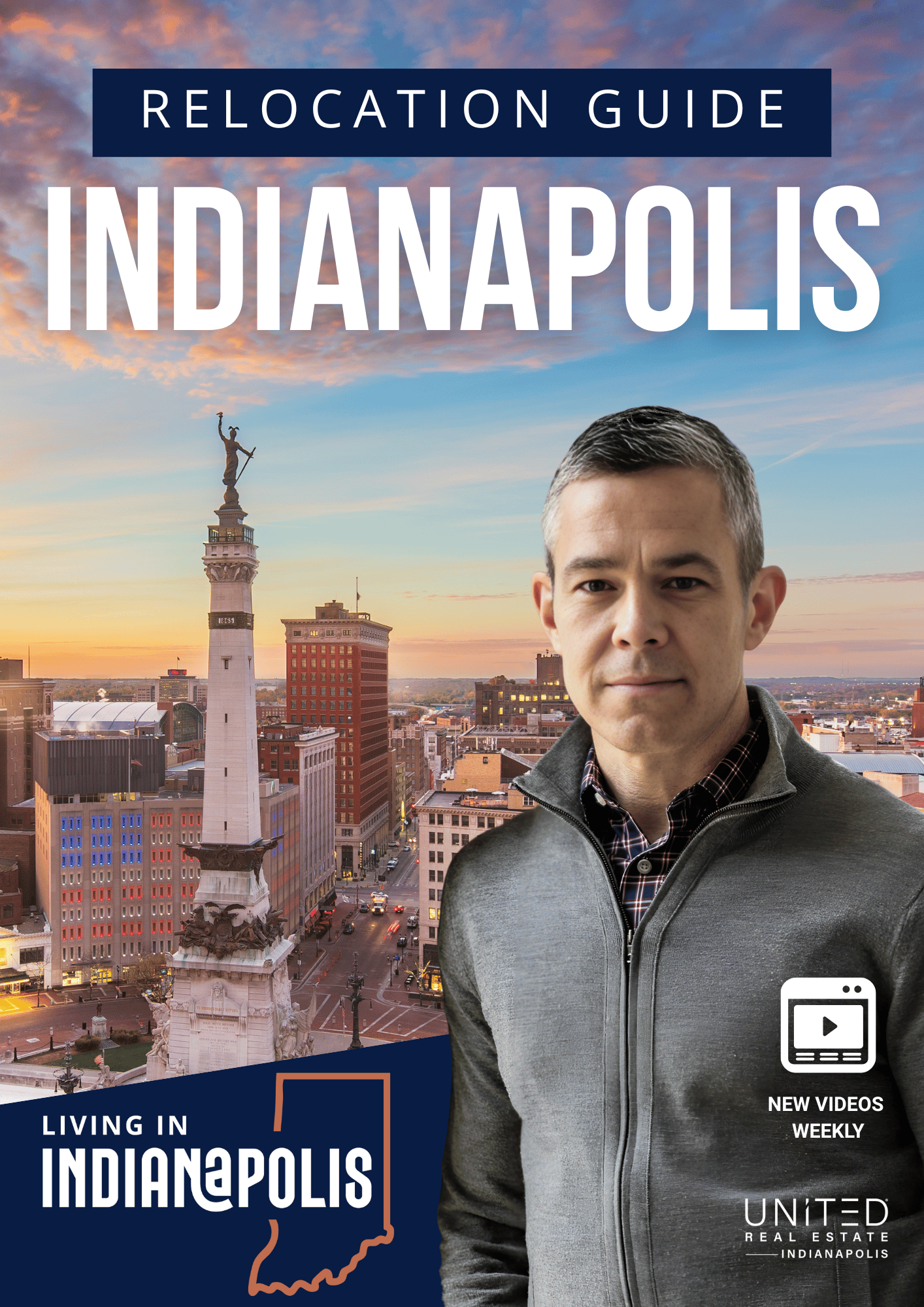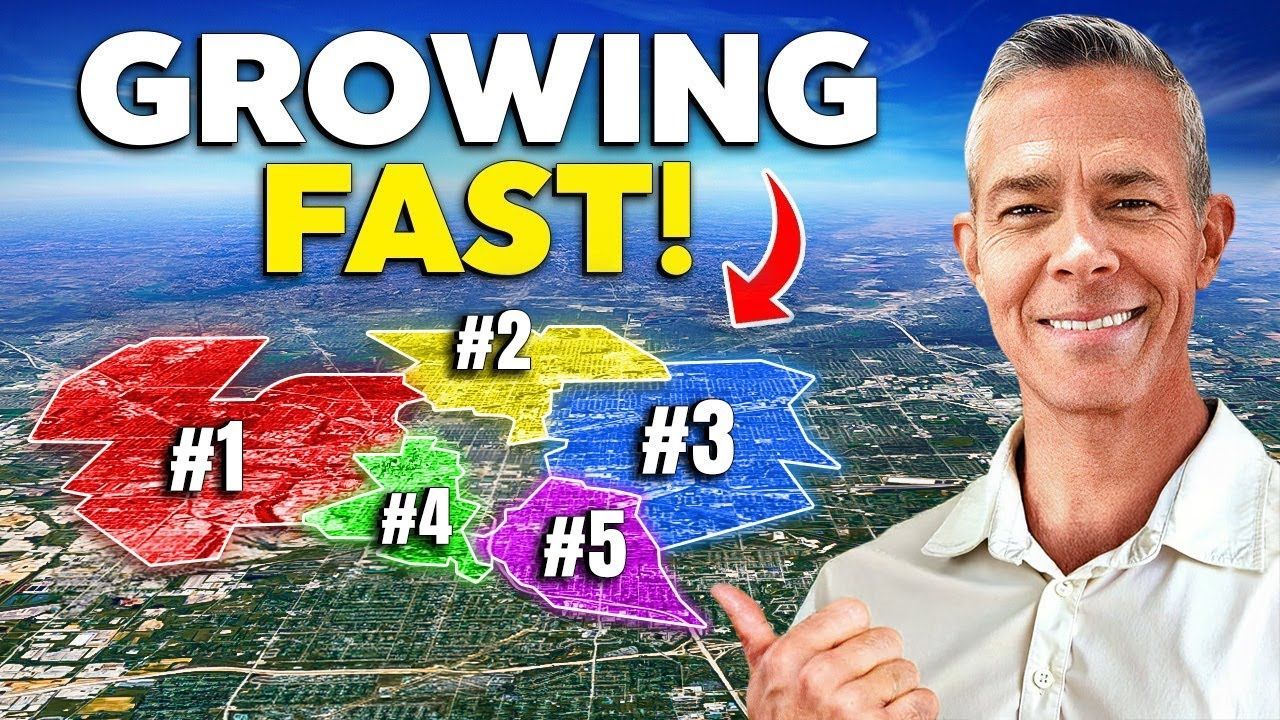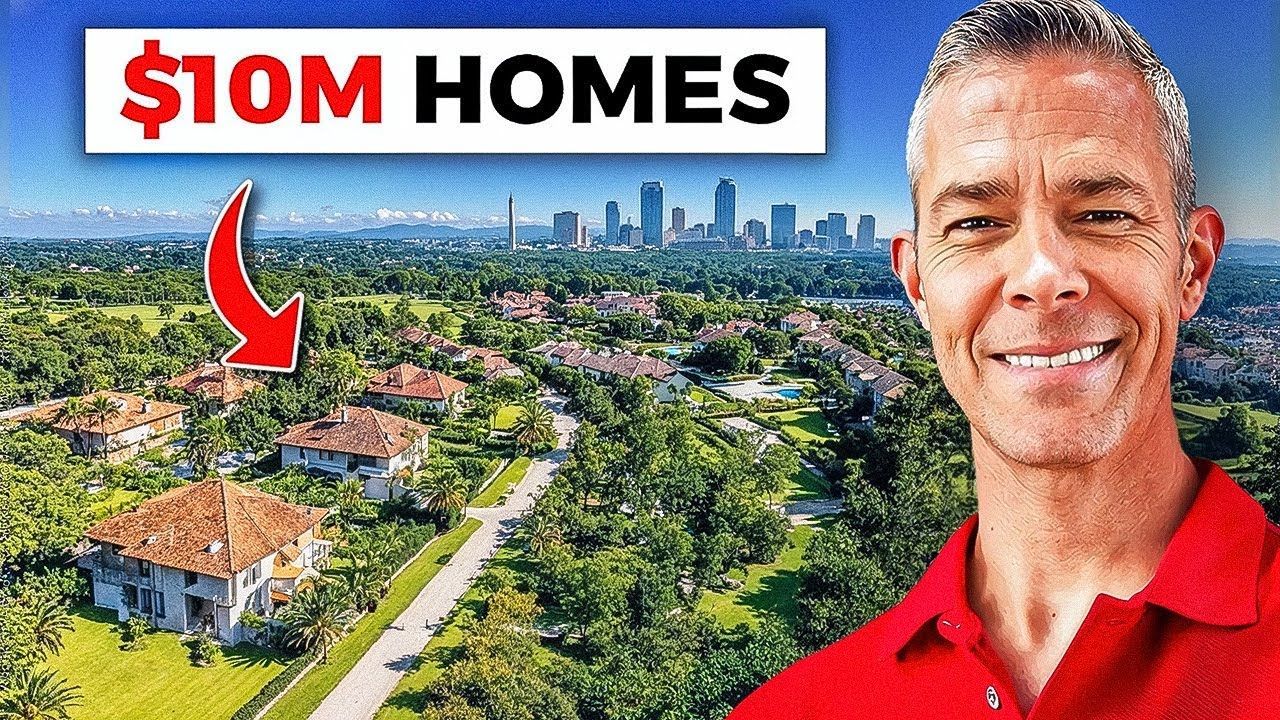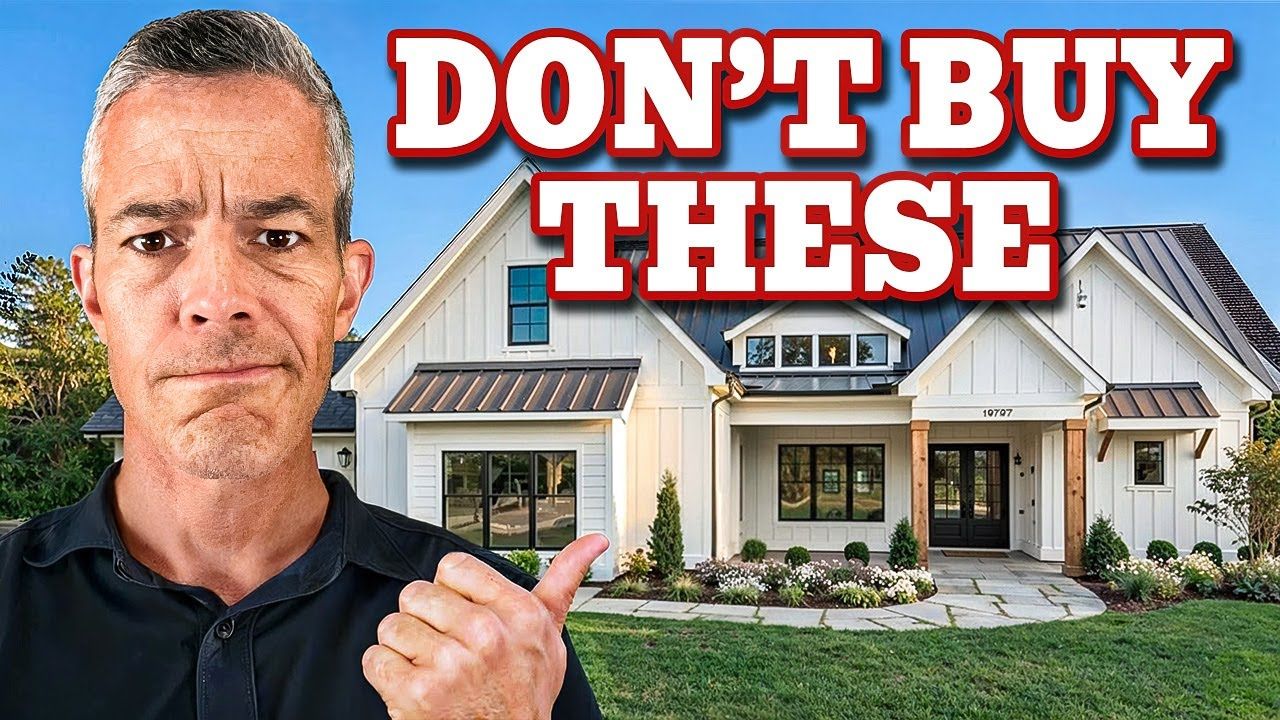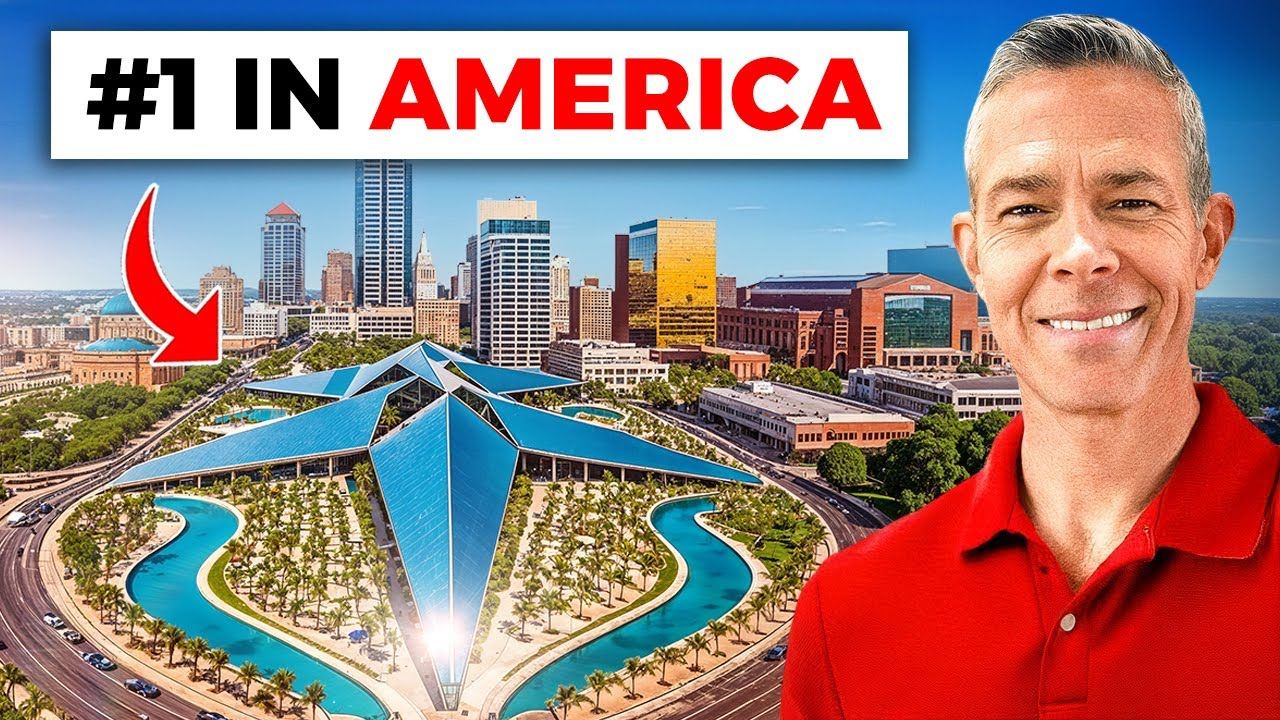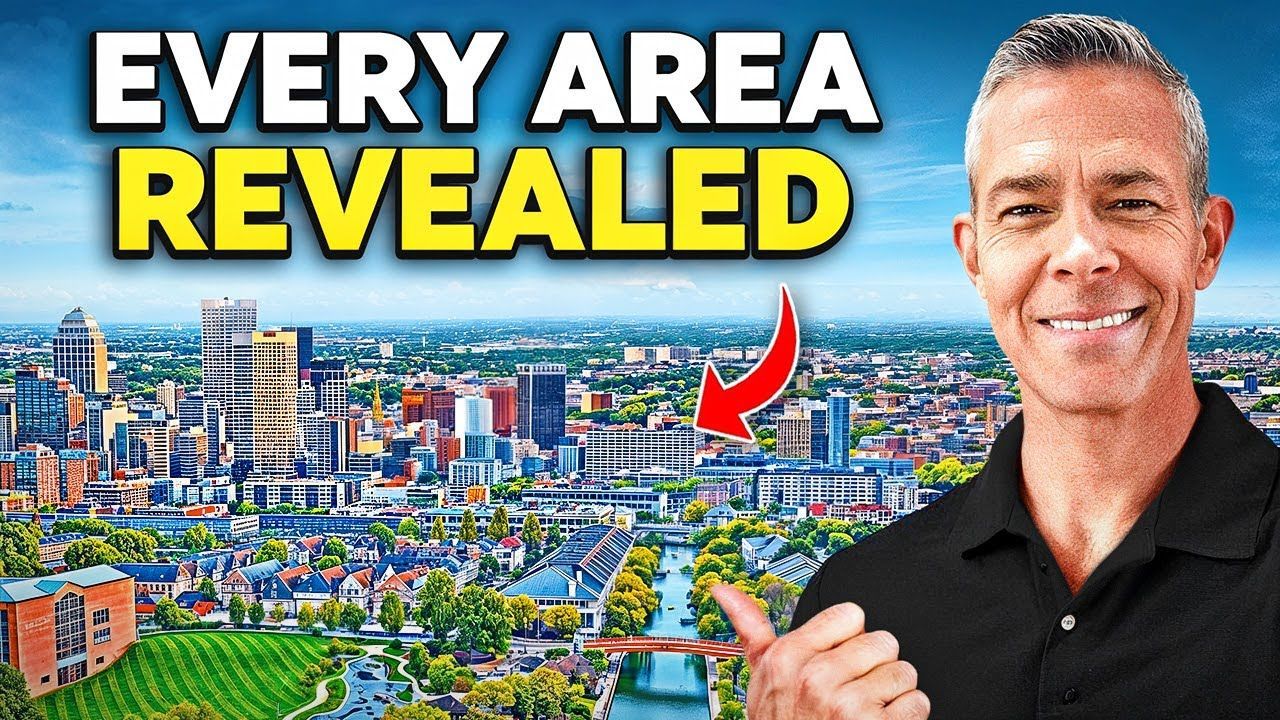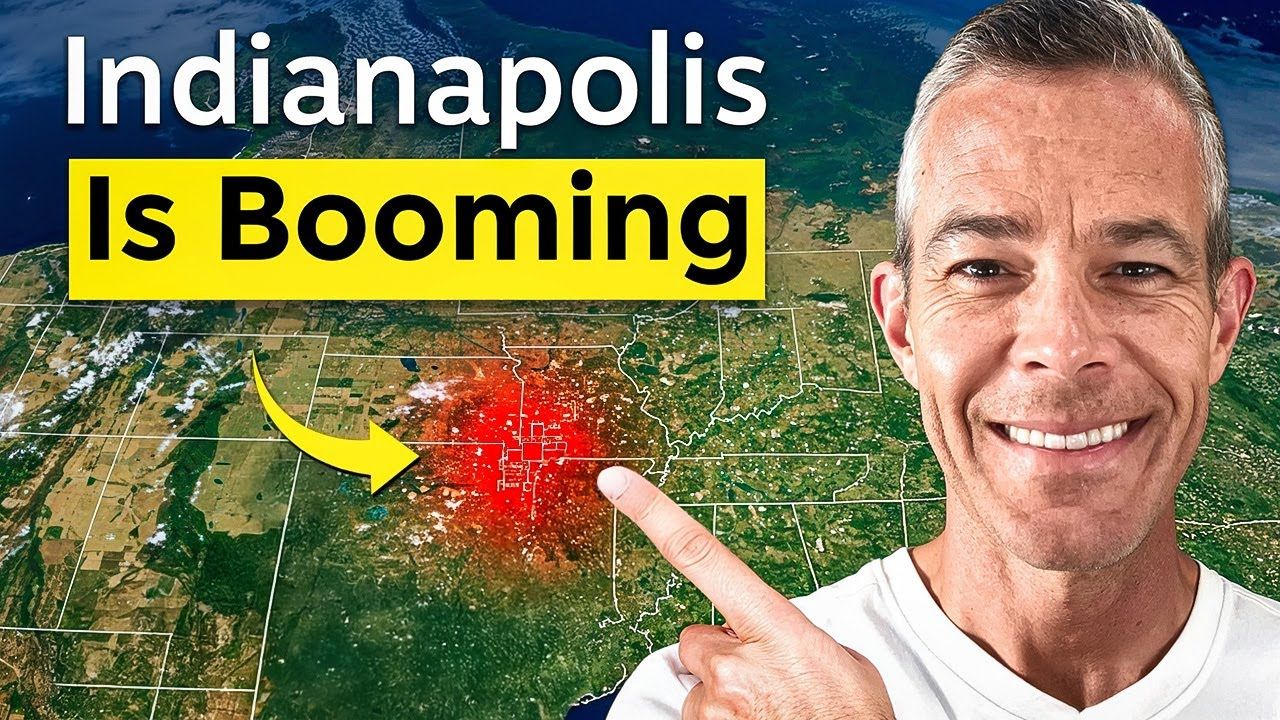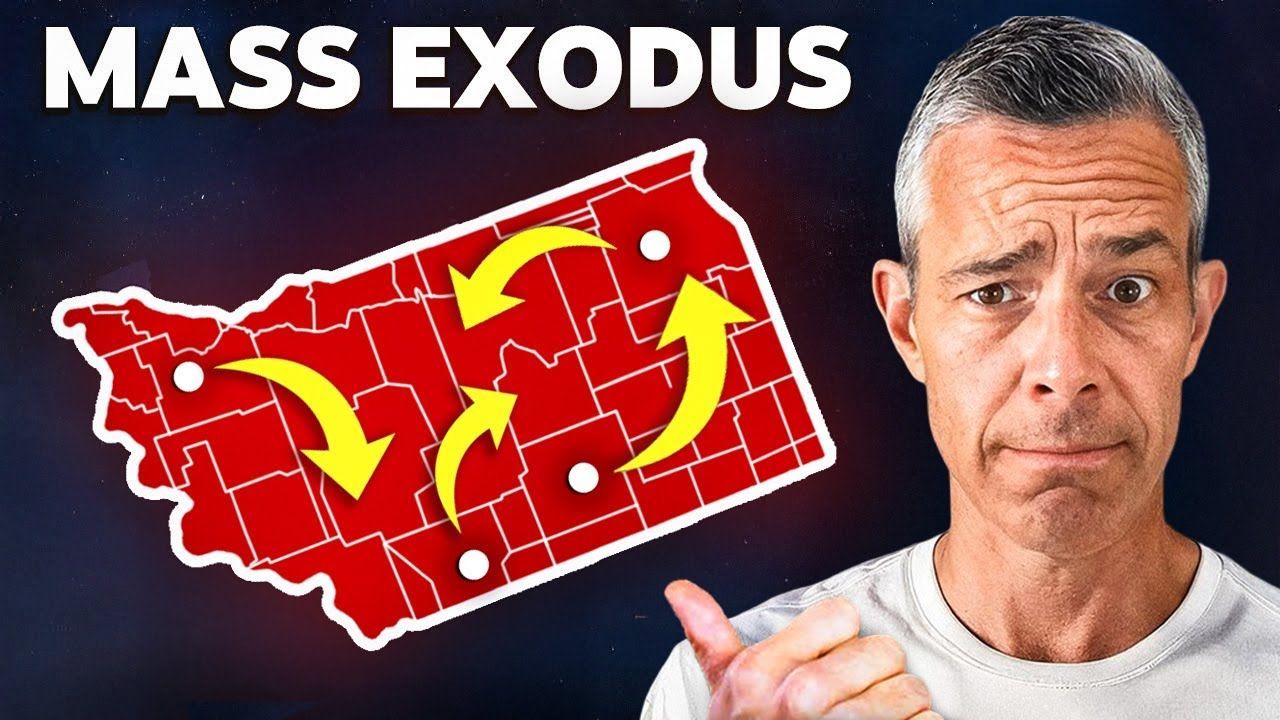Ranking Indianapolis Areas From WORST to BEST
I'm Jason Compton with Living In Indianapolis, and in this in-depth guide I walk you through the Indianapolis metro and rank neighborhoods and suburbs so you can make smart decisions when moving to Indianapolis area. Whether you're buying your first home, relocating with a family, or investing for appreciation, the exact suburb you choose matters. In this article I break down towns I categorize into one-star through five-star tiers, share the data behind each neighborhood, call out hidden costs, talk resale risk, and explain the kinds of buyers each place typically attracts.
If you're moving to Indianapolis area, this guide is meant to mirror the same practical, no-nonsense approach I use with clients every day. I'll show you examples, share recent median price data, days on market trends, pros and cons, and give realistic expectations for short-term flips versus long-term equity. I also include plenty of screenshots so you can capture moments from the walkthrough and get a feel for each place visually.
Table of Contents
- Ranking Indianapolis Areas From WORST to BEST
- Area #1: Cumberland
- Area #2: Ingalls
- Area #3: Greenfield
- Area #4: Danville
- Area #5: Plainfield
- Area #6: Brownsburg
- Area #7: Fishers
- Area #8: Zionsville
- Area #9: Carmel
- Area #10: Westfield
- Area #11: Noblesville
- How to Use This Ranking When Moving to Indianapolis Area
- My Advice for First-Time Buyers and Investors Moving to Indianapolis Area
- Common Mistakes People Make When Moving to Indianapolis Area
- Free Resources and Next Steps
- Conclusion: Finding the Right Suburb for Your Goals
- FAQs About Moving to Indianapolis Area
Ranking Indianapolis Areas From WORST to BEST
Before diving into individual suburbs, let me frame how I score each place. When moving to Indianapolis area, people usually care about four things: affordability, appreciation (equity growth), resale liquidity (how quickly homes sell and for how close to list), and lifestyle (schools, amenities, commute). I use a tiered ranking system:
- One-star: Low-cost entry points but with hidden trade-offs — slower appreciation, thin resale market, sometimes perception issues around crime or limited infrastructure.
- Two-star: Good value for very specific buyers; appreciation is present but niche demand limits rapid gains.
- Three-star: Sweet spot value — affordable to many, with amenities and consistent appreciation. These appeal to a broader buyer pool when moving to Indianapolis area.
- Four-star: Premium suburbs with strong school systems, community feel, and high resilience in down markets.
- Five-star: The highest tier — prestige, choice, consistently strong performance across cycles. If you're focused on protecting equity long-term, these are often the safest bets.
Throughout the article I’ll list recent median prices and days-on-market as I reported them around mid-2025. Real estate moves fast — these numbers are a snapshot — but the patterns and trade-offs I highlight remain useful when you're moving to Indianapolis area.
VIEW HOMES FOR SALE IN INDIANAPOLIS, IN
Area #1: Cumberland
Cumberland sits on the far east side of Marion County and spills into Hancock County. It’s the kind of place many buyers notice because it offers very budget-friendly entry points while remaining within a reasonable commute of downtown Indianapolis.
Key stats (mid-2025 snapshot): median sale price ≈ $282,000, down roughly 21.5% year-over-year; average days on market ≈ 33; fewer than 20 homes sold so far that year. Yet when homes do go under contract they typically achieve about 98.4% of list price, reflecting a competitive environment when the right property hits the market.
When moving to Indianapolis area and considering Cumberland, here’s what you need to know:
- Pros: Very affordable; easy east-side access; solid value for buyers priced out of pricier suburbs.
- Cons: Sharp year-over-year price declines at the time of the data; very thin liquidity — low sales volume can magnify price swings; uneven inventory across price tiers; certain perceptions about crime or limited infrastructure investment that can depress demand.
If your objective is a short-term flip or heavy near-term equity gains, Cumberland may not be the best target. But if you want an affordable place to live with the patience to hold for long-term appreciation, it can work well. The key with places like Cumberland when moving to Indianapolis area is to know your exit timeline and expected liquidity.
Area #2: Ingalls
Next along my one-star examples is a tiny place many folks have never heard of—Ingalls. It sits in Madison County between Fortville and Pendleton. Small size is both its charm and its challenge.
Key stats (mid-2025 snapshot): median sale price ≈ $132,500, down a dramatic 56.8% year-over-year; average days on market < 8; fewer than five sales in the period examined.
Why the wild swing? Because when a market has very low sales volume (less than five transactions in a year), a single outlier sale can push median values dramatically up or down. That produces "whiplash" in year-over-year data and creates risk for investors or buyers aiming for quick exits.
- Pros: Extremely low entry price; proximity to Fortville, Pendleton, and even Noblesville makes some properties highly desirable and competitive at the right price.
- Cons: Extremely thin market—single outlier sales can skew values; exit timing becomes unpredictable; data volatility makes underwriting riskier.
If you're moving to Indianapolis area and considering a place like Ingalls, proceed with caution. It can be a great value if you can tolerate unpredictability and own for the long term, but it's not a reliable short-term equity play.
Area #3: Greenfield
Greenfield sits just east of Cumberland and is an early example of a solid two-star suburb. If you're moving to Indianapolis area and need to remain budget-conscious, Greenfield is worth looking at.
Key stats (mid-2025 snapshot): median sale price ≈ $285,000, up about 3.6% year-over-year; average days on market ≈ 23 (up from ~17 the prior year).
Greenfield’s story is interesting because it’s growing but still retains that "outside Indianapolis" perception. It’s roughly a 30-minute drive to downtown Indy from central Greenfield—closer than many assume.
- Pros: Affordable price point for a wide pool of buyers; steady appreciation supports long-term equity; growth in local jobs and new businesses is fueling demand.
- Cons: Some buyers self-select out because of perceived distance from Indianapolis; niche buyer pool could slow rapid short-term appreciation; days on market creeping up suggests modest cooling.
For buyers moving to Indianapolis area who want affordability and a balanced lifestyle, Greenfield often represents a middle ground—more predictable than the one-star tier, but still offering value compared to the premium suburbs.
VIEW HOMES FOR SALE IN GREENFIELD, IN
Area #4: Danville
Moving to Indianapolis area and looking west? Danville is a two-star option that has been on many buyers' radars for a while. It sits in Hendricks County and provides suburban living with access to larger employment centers.
Key stats (mid-2025 snapshot): median sale price ≈ $350,500; modest year-over-year increase—reported in the video as roughly 6% and close to flat in days on market.
Danville is stable. It doesn't show explosive short-term gains, but it also doesn’t present significant downside risk for mid- to long-term owners.
- Pros: Price stability and favorable long-term outlook; family-friendly environment.
- Cons: Not a short-term equity play — dramatic gains in a 2–3 year window are unlikely; perceived farther from central Indianapolis means some buyers won't consider it.
If you're moving to Indianapolis area and you want predictability and a family-focused community, Danville often delivers. It's a classic “buy and hold” town rather than a flipping opportunity.
Area #5: Plainfield
Now moving into the three-star tier—the sweet spot for many buyers. Plainfield, on Indianapolis’ southwest side, is a strong example. It frequently flies under the radar, but its performance has been consistently solid.
Key stats (mid-2025 snapshot): median sale price ≈ $330,000; up about 6% year-over-year; average days on market ≈ 10 days (faster than last year’s ~20 days).
Why Plainfield is attractive when moving to Indianapolis area:
- Pros: Strong annual appreciation in recent years; homes turn quickly; good mix of amenities and affordability; appealing to a broad buyer pool.
- Cons: If you're looking to flip in a single year and expect double-digit returns, Plainfield's typical 6% annual growth may not match that ambition.
For buyers who want a place that balances price, schools, amenities, and steady appreciation, Plainfield is often a top pick among people moving to Indianapolis area.
VIEW HOMES FOR SALE IN PLAINFIELD, IN
Area #6: Brownsburg
Brownsburg has been a popular northwest-side suburb for several years. It sits comfortably in the three-star tier and appeals to a large family buyer segment.
Key stats (mid-2025 snapshot): median sale price ≈ $333,500; a small decline compared to the prior year (reported in the video as about a 2.1% decline but referenced as “21%” in places — interpret as modest plateauing); average days on market ≈ 23, up from about 12 the prior year.
Brownsburg’s performance shows a market moving toward stability after several years of rapid growth. The average days on market increasing suggests buyers have step back slightly, but the town remains competitive for desirable properties.
- Pros: Highly desirable for families; strong schools and community amenities; still competitive pricing for the right homes.
- Cons: Slight leveling off may mean buyers and investors should temper short-term return expectations; large inventory chunks or new builds in certain pockets can pressure prices briefly.
If you’re moving to Indianapolis area and want a family-centered environment with proven demand, Brownsburg is a reliable option that typically favors stability over volatility.
VIEW HOMES FOR SALE IN BROWNSBURG, IN
Area #7: Fishers
Stepping into the four-star category, Fishers is a suburban heavyweight. For many buyers moving to Indianapolis area, Fishers represents a balance of top-rated schools, robust amenities, and a strong reputation.
Key stats (mid-2025 snapshot): median sale price ≈ $435,000; up marginally (the video cites roughly 0.2% year-over-year); average days on market ≈ 12 (up from about 5 the prior year, but still quick).
Fishers has been an attractive choice for years, and demand tends to remain high even when broader markets cool. The modest price growth reflects a mature market with consistent demand rather than speculative spikes.
- Pros: Long-term resilience, premier schools, centralized amenities, and strong community networks that hold value in down cycles.
- Cons: For buyers hoping to flip within 2–3 years for outsized gains, Fishers’ slower, steadier appreciation isn’t ideal; entry price is higher so affordability may be a barrier.
Overall, when moving to Indianapolis area and prioritizing long-term equity protection and family life, Fishers is a clear four-star contender.
VIEW HOMES FOR SALE IN FISHERS, IN
Area #8: Zionsville
Zionsville is another four-star suburb—one with prestige and strong historic appreciation. It’s often among the highest-performing markets near Indianapolis.
Key stats (mid-2025 snapshot): median sale price ≈ $747,500; up roughly 26% year-over-year; average days on market ≈ 13.
The dramatic year-over-year gains reflect sustained demand, limited supply, and the premium buyers place on Zionsville’s village-like downtown, top schools, and quality of life. These characteristics produce excellent retention of value and significant appreciation across market cycles.
- Pros: Strong demand, exceptional value retention, and materially higher appreciation compared to many suburbs.
- Cons: High entry price makes it inaccessible for many buyers; supply is limited, so choices are fewer; competition among buyers is intense.
If protecting equity is your priority when moving to Indianapolis area, Zionsville is an excellent choice—but expect a premium price tag.
VIEW HOMES FOR SALE IN ZIONSVILLE, IN
Area #9: Carmel
Carmel regularly lands in the five-star tier. It combines prestige, top-tier schools, abundant amenities, and consistent performance through market cycles—making it a favorite for families and executives moving to Indianapolis area.
Key stats (mid-2025 snapshot): median sale price ≈ $447,500; up about 2.3% year-over-year; average days on market ≈ 13. But note: Carmel is a large submarket with internal variation. For example, central Carmel (zip 46032) had a median closer to $567,000 and stronger growth (~8.8%).
What makes Carmel a five-star pick:
- Pros: Blue-chip schools, cultural amenities, walkable districts, strong community identity, and a reputation that supports long-term value.
- Cons: Entry cost is higher; markets vary by subarea (east, central, west) so micro-location matters; some buyers may be surprised if they expect uniform performance across all Carmel neighborhoods.
For buyers moving to Indianapolis area who place a premium on schools, culture, and long-term resale protection, Carmel is frequently the go-to option. But make sure to analyze the precise part of Carmel you're buying into—central Carmel performs differently than peripheral pockets.
VIEW HOMES FOR SALE IN CARMEL, IN
Area #10: Westfield
North of Carmel, Westfield is approaching five-star status in my view. Rapid new construction, master-planned neighborhoods, and continued investment have pushed Westfield into a higher-tier category.
Key stats (mid-2025 snapshot): median sale price ≈ $500,000; days on market ≈ 13; year-over-year growth ≈ 8.8%.
Westfield’s primary advantage is upside from rapid growth. The flip side of that growth is competition with new construction, which can compress resale prices for sellers of slightly older homes in the neighborhood.
- Pros: Strong upward trajectory, modern amenities, master-planned communities, and significant long-term demand.
- Cons: Heavy new construction means resale sellers may compete with brand-new inventory; if you plan to buy and sell within 3–4 years, plan around the new-build supply effects.
For many buyers moving to Indianapolis area who love newer construction and want long-term appreciation potential, Westfield is an excellent choice—just be mindful of timing and resale competition.
VIEW HOMES FOR SALE IN WESTFIELD, IN
Area #11: Noblesville
Noblesville landed in my five-star list because it offers an exceptional combination of affordability, amenities, and size. With more than 80,000 residents, Noblesville is a large, well-connected hub that offers strong lifestyle appeal without the highest entry costs of some five-star peers.
Key stats (mid-2025 snapshot): median sale price ≈ $375,000; up about 4.4% year-over-year; average days on market ≈ 12.
Why Noblesville ranks so highly when moving to Indianapolis area:
- Pros: Affordability relative to similar five-star suburbs; strong mix of amenities (downtown, shopping, parks); well-connected to Westfield, Fishers, and Carmel; large population gives depth to the resale market.
- Cons: Less prestige than Zionsville or Carmel, which for some buyers matters; because it “flies under the radar,” sellers may need more marketing to convey the value compared to pricier neighboring suburbs.
Noblesville often provides “best buy” value for families and buyers who want five-star lifestyle features without the highest price tags. If you're moving to Indianapolis area and you want the best mix of price, lifestyle, and resale durability, Noblesville is a top contender.
VIEW HOMES FOR SALE IN NOBLESVILLE, IN
How to Use This Ranking When Moving to Indianapolis Area
Choosing a suburb when moving to Indianapolis area comes down to setting priorities. Here’s a practical process I recommend for buyers:
- Define your timeline. Are you buying to live 10+ years, or is this a 2–3 year move? If short-term, steer away from highly volatile micro-markets and one-star towns with thin liquidity.
- Prioritize must-haves. Schools, commute, yard size, neighborhood walkability — identify your non-negotiables and use the tier list to filter places that match.
- Analyze resale liquidity. Look at typical days on market and transaction volume, not just median price. A suburb with thin inventory can skew medians.
- Consider hidden costs. Property tax rates, infrastructure investments, HOA fees, and potential competition from new construction can erode returns.
- Visit multiple times and at different times of day. Perceptions (traffic, noise) change depending on timing, and you want to get the lived experience of a place before committing.
If you’re unsure what tier to target when moving to Indianapolis area, start by defining your timeline and then work backward to match suburbs whose liquidity and appreciation patterns align with your goals.
My Advice for First-Time Buyers and Investors moving to Indianapolis area
Whether you're a first-time buyer or an investor, the same basic rules apply when moving to Indianapolis area:
- Match product to purpose: If you want stability for a family and plan to stay long-term, picking a three- to five-star suburb makes sense. If you're an investor seeking higher cap rates but can manage more risk, one- and two-star suburbs may fit—just understand the liquidity and volatility trade-offs.
- Underwrite conservatively: When projecting appreciation or resale price, use conservative scenarios (not best-case). In thin markets, a single sale can swing medians wildly.
- Budget for carrying costs: Property taxes, maintenance, and potential extended marketing time if you need to sell quickly.
- Watch new construction dynamics: In high-growth places like Westfield, new builds can change buyer comparisons and affect resale strategy for homes even a few years old.
For most families moving to Indianapolis area, I encourage a balanced approach: focus on neighborhoods with consistent demand and depth of buyers. That usually means three-, four-, and five-star suburbs, unless you have a specific reason to buy lower tier.
Common Mistakes People Make When moving to Indianapolis area
Here are common mistakes I see clients make when moving to Indianapolis area:
- Over-relying on headline median price changes: Especially in very small markets like Ingalls, medians can swing due to single outlier sales. Always look at transaction counts and broader CBSA trends.
- Ignoring days-on-market and inventory: These tell you about liquidity. Low sales volume can mean unpredictable resale timing.
- Not planning for new construction competition: Buying in a fast-growing suburb without considering the next phase of builds can hurt resale prospects two to five years down the road.
- Assuming all neighborhoods within a city perform the same: Large suburbs (Carmel, Fishers, Noblesville) have micro-markets—zip codes, school districts, and pockets that perform differently.
Awareness of these pitfalls can save you time, stress, and money when moving to Indianapolis area.
Free Resources and Next Steps
If you’re actively moving to Indianapolis area or just starting the planning phase, I’ve got a free 55-page relocation guide that walks through towns, school districts, commute times, and lifestyle considerations across the metro. It’s meant to give you a practical orientation before you start touring homes.
Downloads and tools like neighborhood exploration apps can accelerate your familiarity and help you shortlist areas that match budget, schools, and lifestyle. When you start touring, keep your timeline and exit strategy front of mind.
Download my FREE Relocation Guide
Conclusion: Finding the Right Suburb for Your Goals
Moving to Indianapolis area is about matching the suburb to your goals. One-star suburbs offer accessibility and low entry prices but often come with higher volatility and thin markets. Two-star towns are niche value plays. Three-star suburbs are the sweet spot for many—good value, broader demand, and consistent appreciation. Four- and five-star suburbs provide protection for equity with premium amenities and stability, though often at higher entry costs.
If you want a simple rule of thumb when moving to Indianapolis area: define how long you plan to own and pick the tier that aligns with that horizon. Short horizons (2–3 years) demand high liquidity and stable comps; longer horizons (10+ years) allow you to favor growth potential and lifestyle fit.
Thanks for reading — if you want help narrowing choices, running numbers for specific homes, or exploring neighborhoods with an expert, call or text me at 317-932-8620. I work with buyers every day to match goals to the right suburb and to protect client equity long-term when moving to Indianapolis area.
FAQs About Moving to Indianapolis Area
Which suburbs are best if I want to protect equity?
Focus on four- and five-star suburbs—Fishers, Zionsville, Carmel, Westfield, and Noblesville. These areas have sustained demand, strong schools, and community amenities that support value retention during downturns when moving to Indianapolis area.
I’m on a budget. Which suburbs give the best value?
For affordability combined with reasonable upside, consider three-star and select two-star suburbs like Plainfield and Greenfield. Cumberland or Ingalls can offer very low entry prices, but they come with liquidity and appreciation trade-offs. The right choice depends on your timeline and tolerance for volatility when moving to Indianapolis area.
How should I account for new construction when buying?
New construction can compete with resale homes in neighborhoods like Westfield. If you buy a recently built home, expect a share of buyers to prefer brand-new inventory. Analyze pipeline construction and upcoming phases, and price your home to account for this competition when moving to Indianapolis area.
How important are days-on-market and sales volume?
Very. Days-on-market shows liquidity; low sales volume indicates thin markets where medians can be volatile. For predictable resale, choose suburbs with steady transaction counts and reasonable days-on-market when moving to Indianapolis area.
Can I still get solid appreciation in a smaller suburb?
Yes, but expect more variation and risk. Smaller suburbs with limited sales can produce strong appreciation if local drivers (jobs, infrastructure, school improvements) change, but the risk of outliers affecting medians is higher when moving to Indianapolis area.
What’s the best next step if I’m exploring a move?
Start with a guided neighborhood list aligned to your timeline and priorities. Download a relocation guide, use an exploration app, and book a consult to create a short list. Touring multiple suburbs at different times of day is essential when moving to Indianapolis area.
jason compton
A former teacher turned full-time real estate agent serving Greater Indianapolis. I help buyers, sellers, and relocation clients make informed moves—especially those coming from out of state. From neighborhood insights to home tours, my goal is to simplify the process and help you feel confident in every step.
Stay Informed
Insights, Tips & Life in Indianapolis
Your go-to resource for all things real estate and Indy living. Whether you're buying, selling, relocating, or just curious about the local market, our blog is packed with helpful articles, expert advice, and community highlights to keep you informed and inspired.
